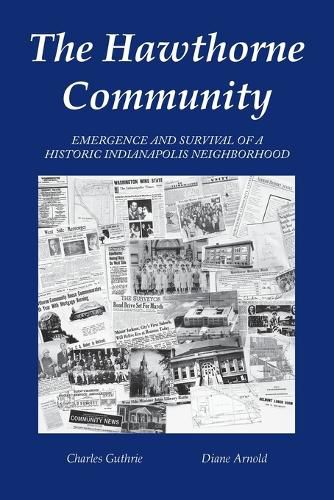Readings Newsletter
Become a Readings Member to make your shopping experience even easier.
Sign in or sign up for free!
You’re not far away from qualifying for FREE standard shipping within Australia
You’ve qualified for FREE standard shipping within Australia
The cart is loading…






This title is printed to order. This book may have been self-published. If so, we cannot guarantee the quality of the content. In the main most books will have gone through the editing process however some may not. We therefore suggest that you be aware of this before ordering this book. If in doubt check either the author or publisher’s details as we are unable to accept any returns unless they are faulty. Please contact us if you have any questions.
Local leaders and residents of urban neighborhoods across the country have mourned the loss of community that once existed in clearly defined neighborhoods. This book tells the story of such a loss. But it also tells about this community's decades of building and success, of hard work and sharing, of creativity and celebration. Hawthorne emerged as a residential working class neighborhood on the fringe of Indianapolis, Indiana. It began in the early 20th century as new arrivals settled on a remaining strip of open farmland two miles from the city's center. An stable society of churches, schools, businesses and social groups evolved and prospered well into the post-WW II era. From the early 1960s to the late 1990s the residents' expectations of permanence gave way to a gradual but devastating series of developments over which they had no control. Many of the residents and the institutions that had supported them either closed or moved away opening the space for newcomers and rentals. Ultimately the neighborhood lost the network of local institutions that had anchored the community for decades. The Hawthorne Community Center, left virtually alone, continued its work and adapted its programs for a changing neighborhood. It was forced to assume the multiple roles of advocate, primary source for the residents in need, and intermediary between the neighborhood and external sources of support. The Hawthorne story provides a useful context for any discussions about the future of constantly changing historic neighborhoods and their relationship with the larger urban establishment. Local histories such as this one also offer a valuable tool to help both residents and outsiders free themselves from the negative stereotypes that tend to blame victims for their current situation.
$9.00 standard shipping within Australia
FREE standard shipping within Australia for orders over $100.00
Express & International shipping calculated at checkout
This title is printed to order. This book may have been self-published. If so, we cannot guarantee the quality of the content. In the main most books will have gone through the editing process however some may not. We therefore suggest that you be aware of this before ordering this book. If in doubt check either the author or publisher’s details as we are unable to accept any returns unless they are faulty. Please contact us if you have any questions.
Local leaders and residents of urban neighborhoods across the country have mourned the loss of community that once existed in clearly defined neighborhoods. This book tells the story of such a loss. But it also tells about this community's decades of building and success, of hard work and sharing, of creativity and celebration. Hawthorne emerged as a residential working class neighborhood on the fringe of Indianapolis, Indiana. It began in the early 20th century as new arrivals settled on a remaining strip of open farmland two miles from the city's center. An stable society of churches, schools, businesses and social groups evolved and prospered well into the post-WW II era. From the early 1960s to the late 1990s the residents' expectations of permanence gave way to a gradual but devastating series of developments over which they had no control. Many of the residents and the institutions that had supported them either closed or moved away opening the space for newcomers and rentals. Ultimately the neighborhood lost the network of local institutions that had anchored the community for decades. The Hawthorne Community Center, left virtually alone, continued its work and adapted its programs for a changing neighborhood. It was forced to assume the multiple roles of advocate, primary source for the residents in need, and intermediary between the neighborhood and external sources of support. The Hawthorne story provides a useful context for any discussions about the future of constantly changing historic neighborhoods and their relationship with the larger urban establishment. Local histories such as this one also offer a valuable tool to help both residents and outsiders free themselves from the negative stereotypes that tend to blame victims for their current situation.